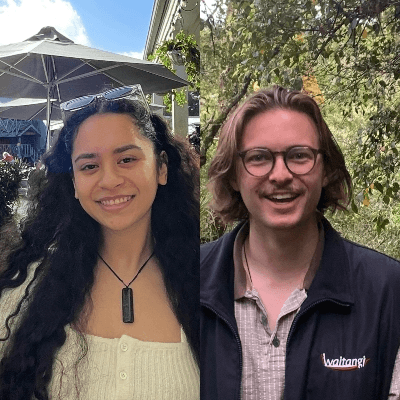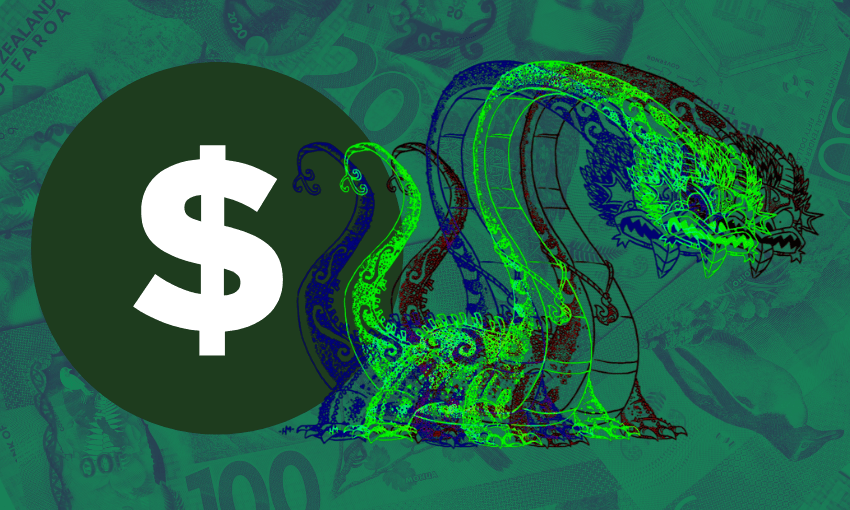A new school is opening in the South Taranaki town next year after a fire extensively damaged the old intermediate in 2015. Airana Ngarewa reports.
In October 2015 a fire tore through Hāwera Intermediate School, destroying 10 classrooms, the library and the hall – two-thirds of the kura. In the time since, the school has had to make do, at first sharing the facilities of Hāwera High School and then afterwards, making use of a series of prefabricated and demountable classrooms.
It is not the first time the community of Hāwera – the largest centre in South Taranaki – has been rocked by such a tragedy. The name of the township in full is Te Hāwera, an ingoa tapu with three possible interpretations: the burnt place, the breath of fire and the burning plains. While traditions vary across hapū and iwi, the most well known pakiwaitara tells of an ope sneaking into a rival village at night and setting it ablaze, leaving not a single survivor. In 1884, 1888 and 1912 the community was rocked again by fire – the latter razing a large portion of the main street area. The township’s name hangs over it like a cloud of smoke.
Fortunately, some of the intermediate was saved. Even so, until recently, the future of the school has been in limbo, with staff, students and the community unsure of what would happen in the long term. This would change in 2021 when education minister Chris Hipkins outlined two potential solutions to the problems caused by the blaze: either the contributing primary schools would be made full primary schools (Year 1 to Year 8), or the primary schools would remain as they are and a new Year 7 to Year 13 school would be set up.
This would mean either that Hāwera Intermediate and Hāwera High School would merge or that an entirely new school would be created. The latter was favoured by both principals as well as their boards of trustees, and it was announced this year that this is exactly what they will get.
While a sprinkling of announcements were made regarding this new school’s senior leadership team, the school was referred to as Hāwera New School. Then, at Matariki, its leadership held a community hui, announcing the new school’s name and its guiding kaupapa as represented through whakatauākī and its logo.
Here the name of the kura was first announced: Te Paepae o Aotea. This ingoa was gifted to the school by Te Runanga o Ngāti Ruanui and Te Korowai o Ngāruahine, the administrative wings of the key iwi of this area. Te Paepae refers to the speaking benches most associated with pōhiri and Aotea refers to the waka that Turi and Rongorongo used to sail here in the great migration. The name seeks to acknowledge not only the history of mana whenua but lay out the aspiration that this new school is a place of meaningful connection and healthy debate, just as the paepae is on the marae.
Te Runanga o Ngāti Ruanui and Te Korowai o Ngāruahine also gifted the whakatauākī: Kia eke atu ki Taupaenui o te tangata – People reaching their full potential. These words derive from the karakia, Te Hā Oranganui, as composed by Dr Huirangi Waikerepuru and first recited at the rising of the sun each day during a series of wānanga in 1998 at Taiporohenui Marae.
The importance of this ingoa and whakatauākī is made even more clear in the context of these schools. Hāwera Intermediate and Hāwera High School both have large Māori demographics – nearly a third of students in each school – and ERO reports over the last six years point to sometimes significant disparities in achievement between Māori and non-Māori students at these kura. Overcoming this legacy of Māori underachievement will undoubtedly be one of Te Paepae o Aotea’s greatest challenges, however, its commitment to partnering with iwi and honouring mātauranga Māori will likely go a long way towards solving this problem.
This leads to the final piece of this new school’s image: its logo. At the centre of the piece stands the silhouette of Taranaki Mounga as viewed from Te Hāwera. Behind him is a series of tukutuku panels that symbolise Tāwhaki’s journey to collect the three baskets of knowledge. Poetically, the panels are painted orange in memory of the fire that earned the area its name. At the feet of Koro Taranaki is the awa, honouring te taiao and within it two mangōpare representing Ngāti Ruanui and Ngāruahine. Finally bordering all of it is Puanga (Rigel), the star that mana whenua look to in place of Matariki to bring in the new year. It is altogether a brilliant mihi to local history, local knowledge and local iwi, a target all kura across Aotearoa should strive to emulate.
While consultation with the community continues regarding the new school’s values, the community looks forward to prefabricated classrooms being established at Bayly Park in the near future, and Te Paepae o Aotea hitting the ground running early in 2023.
This is Public Interest Journalism funded through NZ On Air.






